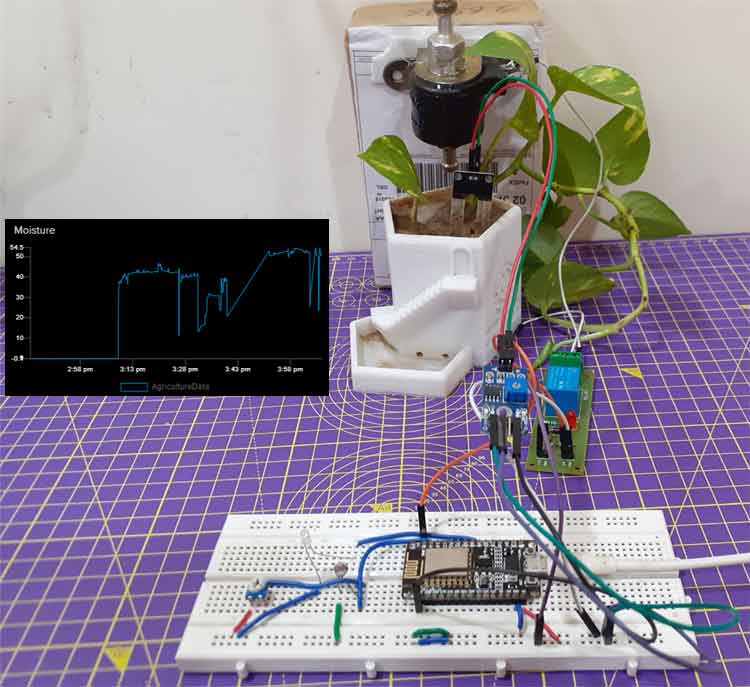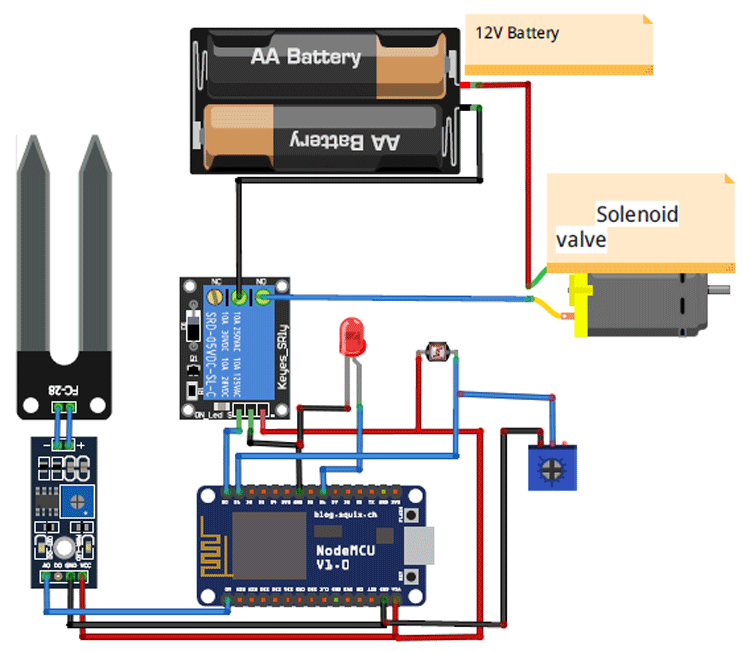 Farmers
across the world face a lot of difficulties in growing crops because of
unpredictable weather conditions and shortage of water. The traditional
irrigation system uses a large amount of water and supplies uneven
water to corps. This affects the quality of crops.
Farmers
across the world face a lot of difficulties in growing crops because of
unpredictable weather conditions and shortage of water. The traditional
irrigation system uses a large amount of water and supplies uneven
water to corps. This affects the quality of crops.
Many farmers already start using the Greenhouse farming and Smart Irrigation System.
Emerging IoT technologies and sensors are used to develop the
irrigation system that can automatically supply water according to
climate conditions like moisture value, temperature, etc.
In this project, we are building an IoT based smart irrigation System using NodeMCU,
Moisture sensor, and LDR. It will automatically sprinkle the water to
plants when the moisture value goes below a particular value. It will
also send the moisture data to Adafruit IO Server to
keep track of the land condition. Adafruit IO dashboard will also have
some buttons to manually turn on/off the solenoid valve and lights. This
project uses a solenoid valve to supply the water to the plants. You
can change the moisture value at which the solenoid valve should turn on
according to your plant's requirement. Here we are using NodeMCU ESP8666 which is a very popular Wi-Fi module for IoT based Projects.
Components Required
Hardware
- NodeMCU ESP8266
- Soil Moisture Sensor Module
- LDR
- 10K Pot
- solenoid valve
- Relay Module
- LED
Online Services
- Adafruit IO
Circuit Diagram for Smart Irrigation System using IoT:
Circuit diagram for Smart Irrigation System using IoT is given below:

In this circuit, the Soil sensor is connected to the A0 pin of NodeMCU. LDR sensor is connected to the D1 pin, and the Relay module is connected to the D0 pin of NodeMCU. Solenoid Valve is connected to the relay module, so whenever NodeMCU generates trigger it will sprinkle water.
Read Full Article: https://www.iotdesignpro.com/projects/smart-irrigation-system-using-iot
Comments
Post a Comment